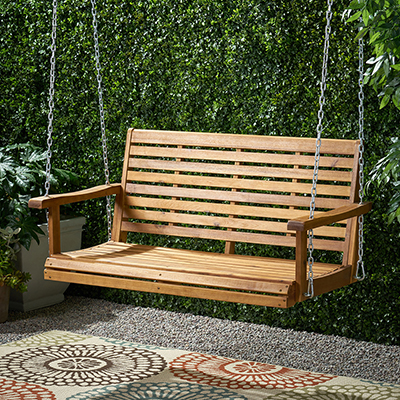Types of Rope

Last updated September 23, 2025
Rope and cord have many applications. They are used in everything from climbing and boating to everyday tasks like hanging laundry. When choosing rope there are different materials and construction techniques to consider. Read on to learn more so you can choose the best rope or cord for your needs.
Safety Tip: Never use rope that is worn or frayed. Avoid wearing out your rope. Store it in a dry place away from excess heat. Keep it clean and coiled without kinking.
Table of Contents
Rope vs. Cord
Rope Strength
Rope Materials
Rope Construction
Rope Features
Rope vs. Cord

Rope and cord have similar construction, but they often have different purposes and capabilities. Typically, cord will have a much smaller diameter than rope.
Rope:
- Usually thicker than 1/8-inch in diameter
- Often made from twisted or braided cords
- Stronger than cord
- Used for both functional and decorative purposes
- Types of rope range from light-duty to heavy-duty
Cord:
- Has a diameter smaller than 1/8-inch
- Made from lengths of fiber that are twisted or braided together
- Often used for lighter tasks such as crafting
Rope Strength

The strength of a rope is rated by both its working load limit and tensile or breaking strength. The tensile strength measures the amount of tension a new rope can take before breaking.
Always choose the rope strength you need based on its working load limit not its tensile strength. The working load limit is a guideline for practical use of the rope. It tells you the maximum amount of weight the rope should support at any time. A rope's working load limit is 15 to 25 percent of its tensile strength. Never exceed a rope’s or cord’s working load limit.
- Light duty rope: Working load limit of up to 99 pounds.
- Medium duty rope: Working load limit between 100 and 999 pounds.
- Heavy duty rope: Working load limit of 1000 pounds or greater.
Consider the following when determining the working load limit you need:
- The working load limit assumes that the load is static and not moving.
- Tying a knot in the rope can reduce its working load limit by up to 50 percent.
- Abrasion resistance is needed for ropes used with pulleys, winches or other devices that cause constant wear.
- Dynamic or moving loads greatly reduce the ability of a rope to hold the load.
- Creep is the amount synthetic fibers slowly stretch while handling a continuous load. Ropes never return to their original length once creep sets in.
Safety Tip: Always consult the manufacturer’s instructions for handling heavy loads. Do not attempt to use ropes in situations in which a life will depend on them without proper training.
Rope Materials

Rope and cord can be made from many different natural and synthetic materials. Each material has its own unique benefits.
- Polyester: Synthetic material that is UV-resistant, abrasion-resistant and maintains its strength when wet. Usually pre-stretched. Good choice for general purpose rope.
- Nylon: Synthetic material that is both flexible and strong. UV-resistant and abrasion-resistant. Weakens in water
and does not float. - Kevlar: Extremely strong synthetic material that is resistant to fire, extreme temperatures, stretch, water and chemicals. Has low UV resistance, so it is often covered with polyester.
- Sisal: A natural fiber used for making twine, paper, cloth, carpets and more. Sustainable and biodegradable. Low water resistance and abrasion resistance. Prone to mildew.
- Manila: A natural fiber that is very stretch-resistant and holds knots well. Sustainable and biodegradable. Like sisal, it has low water and abrasion resistance and can be prone to mildew.
- Coir: A natural fiber made from coconut husks. Sustainable and biodegradable. Used in many gardening applications.
Rope Construction

Ropes can braided, twisted or plaited together. A rope's construction helps determine its strength and best use.
- Single braided: Also known as solid braid. Features lock-stitch construction and is well suited for use with blocks and pulleys.
- Double braided: Features braided rope wrapped around a braided core to provide extra strength.
- Hollow: Features an empty center and can be quickly and easily spliced. Ideal for anchor lines.
- Twisted: Also known as laid rope. Can be easily spliced. Most commonly used type for general applications such as tow ropes.
- Diamond braided: Features an inner core that provides additional strength or allows for filler to increase the diameter. Can be easily spliced.
- Plaited: Features four sets of strands that are intertwined together around the core.
Rope Features

- Some ropes come in vivid fluorescent colors for use in situations where you need to locate them quickly. These ropes are easier to find in an emergency.
- Weather-resistant ropes are treated for UV resistance, mold and mildew resistance and extreme temperatures. They can also be made from materials that naturally have these types of weather resistances.
- Abrasion-resistant ropes will hold up under activities that involve friction. These kinds of ropes are best for outdoor use, marine use and in pulleys.
- When you need rope that floats in water and maintains its strength when wet, look for those made from polyester/polypropylene. They work well for fishing and other water-related uses.
The type of rope or cord you choose will depend on what you're using it for. Choose the material and construction of the cord or rope carefully. Make sure it has the strength, durability and any other features you require for your project.
Need help identifying a rope, cord or other material? Find products fast with image search in The Home Depot Mobile App. Snap a picture of an item you like, and we'll show you similar products.































